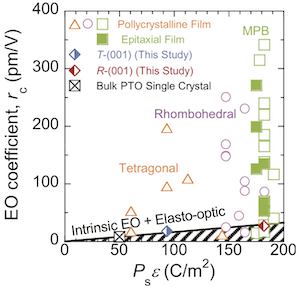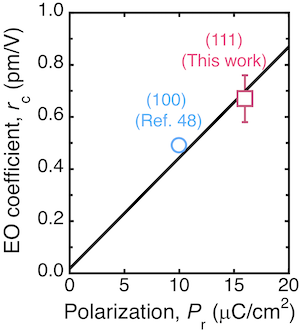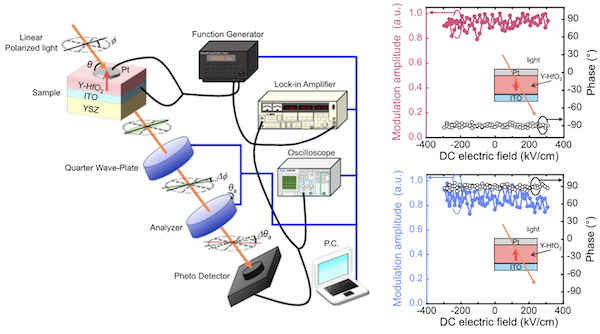Our paper entitled “Revealing Intrinsic Electro-optic Effect in Single Domain Pb(Zr, Ti)O3 Thin Films” has been published in Appl. Phys. Lett. We revealed the intrinsic EO effect in PZT using the single domain films grown on CaF2 substrates. Our finding shows that the intrinsic EO effect is enhanced in PZT, which is similar to the enhancement seen in the dielectric and piezoelectric constants. Moreover, it tells us that most of the reported EO response in PZT films is supported by additional extrinsic contributions.
Citation: APL 119, 102902 (2021).



